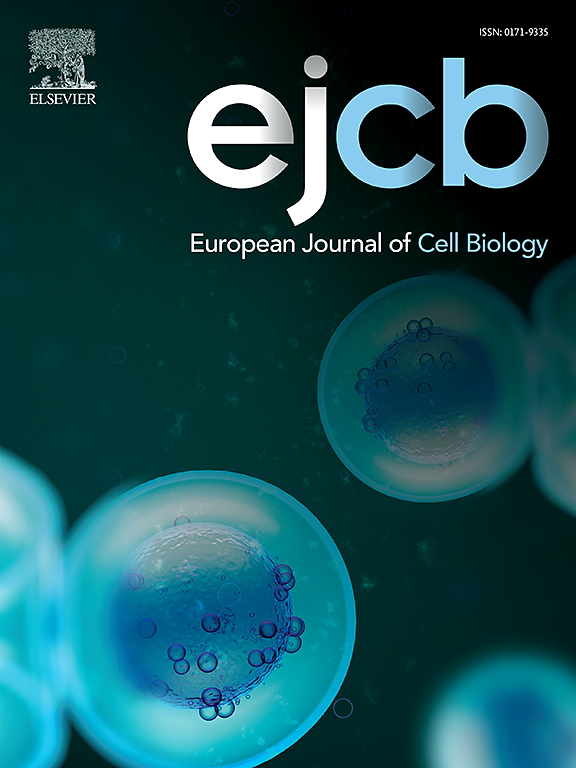Self-organization and applications of neural organoids
IF 4.3
3区 生物学
Q2 CELL BIOLOGY
引用次数: 0
Abstract
Organoid technology has become a field that attract many researcher’s attention and involvement. “Organoid” is a coined word which means organ like-tissue (Organ+oid), and organoid is determined as stem cell-derived three-dimensional (3D) tissues that recapitulate developmental processes and tissue specific function in vivo. Generally, they are derived from pluripotent stem cells (PSCs) including induced pluripotent stem cells (iPSCs) and embryonic stem cells (ESCs), or from tissue stem cells. The first report that created human 3D cerebral tissue arose in 2008 which is currently considered as the pioneering work of “neural organoid” (Eiraku et al., 2008, Sasai 2013a, Sasai 2013b). The neural organoids provide living human neural tissues that bring opportunities to study human development, human neuroscience, neurological and psychiatric disorders, and evolutions. The neural organoid can be said as “cut & paste” of developmental biological process into a dish. Thus, understanding the background of neural organoid needs developmental knowledge, but current organoid researches looks to use organoid as a tool to study the aim that the researchers want to focus. This leads the organoid research more methodological, and the improvement or sophistication of organoid methods has still been difficult for most of new coming researchers. For this problem, this review provide insights of how to assemble organoid methods from viewpoints of development especially from morphological/structual changes. In this review, I start from the brief history of how neural organoid research emerged from developmental biology. Then I introduce some interesting aspects of neural organoid generation focusing on self-organization of regions and structures. From the viewpoint of a developer of this field, this review also show how to think and adjust the methods to generate novel regional organoids taking hippocampal organoids as an example. Regarding structural self-organization I will introduce cerebral organoid for an example of layer organization in a dish. By showing background knowledge with scientific achievements and interesting aspects, this review will help researchers who want to create novel neural organoids.
神经类器官的自组织及其应用
类器官技术已成为众多研究者关注和参与的领域。“类器官”是一个新词,意思是器官样组织(organ +oid),类器官被确定为干细胞衍生的三维(3D)组织,概括了体内的发育过程和组织特异性功能。一般来说,它们来源于多能干细胞(PSCs),包括诱导多能干细胞(iPSCs)和胚胎干细胞(ESCs),或者来自组织干细胞。2008年首次报道了人体3D脑组织的创建,目前被认为是“类神经器官”的开创性工作(Eiraku et al., 2008, Sasai 2013a, Sasai 2013b)。神经类器官提供了活的人类神经组织,为研究人类发育、人类神经科学、神经和精神疾病以及进化带来了机会。神经类器官可以说是“切割”;将发育生物学过程“粘贴”到培养皿中。因此,了解神经类器官的背景需要发育知识,但目前的类器官研究似乎以类器官为工具来研究研究人员想要关注的目标。这使得类器官研究更具方法学性,而类器官方法的改进或完善对于大多数新入行的研究人员来说仍然是困难的。针对这一问题,本文从发育的角度,特别是从形态/结构变化的角度,对如何组装类器官方法提出了见解。在这篇综述中,我从神经类器官研究如何从发育生物学产生的简史开始。然后我介绍了神经类器官生成的一些有趣的方面,重点是区域和结构的自组织。从该领域的开发者的角度,本文还以海马类器官为例,阐述了如何思考和调整方法来产生新的区域性类器官。关于结构自组织,我将以脑类器官为例介绍在培养皿中的层组织。通过展示科学成果和有趣方面的背景知识,本综述将有助于想要创造新型神经类器官的研究人员。
本文章由计算机程序翻译,如有差异,请以英文原文为准。
求助全文
约1分钟内获得全文
求助全文
来源期刊

European journal of cell biology
生物-细胞生物学
CiteScore
7.30
自引率
1.50%
发文量
80
审稿时长
38 days
期刊介绍:
The European Journal of Cell Biology, a journal of experimental cell investigation, publishes reviews, original articles and short communications on the structure, function and macromolecular organization of cells and cell components. Contributions focusing on cellular dynamics, motility and differentiation, particularly if related to cellular biochemistry, molecular biology, immunology, neurobiology, and developmental biology are encouraged. Manuscripts describing significant technical advances are also welcome. In addition, papers dealing with biomedical issues of general interest to cell biologists will be published. Contributions addressing cell biological problems in prokaryotes and plants are also welcome.
 求助内容:
求助内容: 应助结果提醒方式:
应助结果提醒方式:


